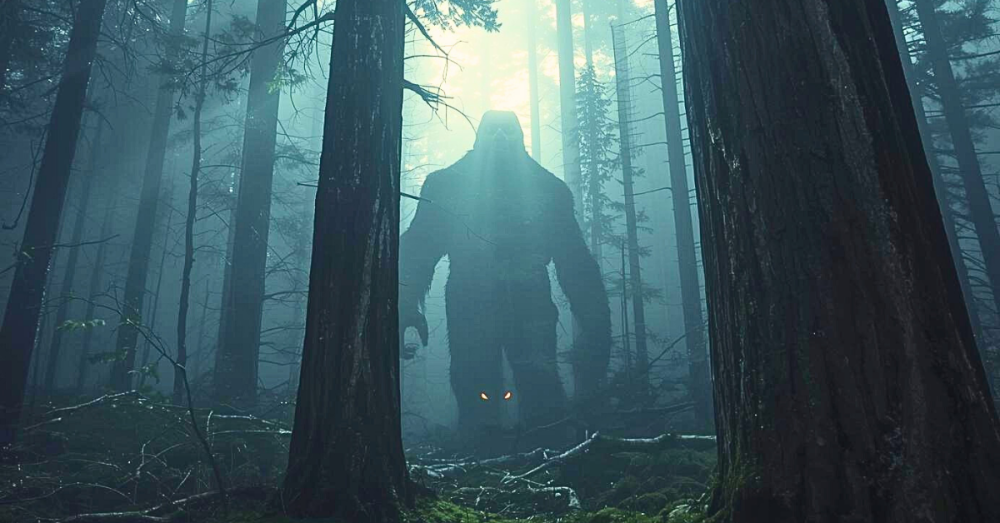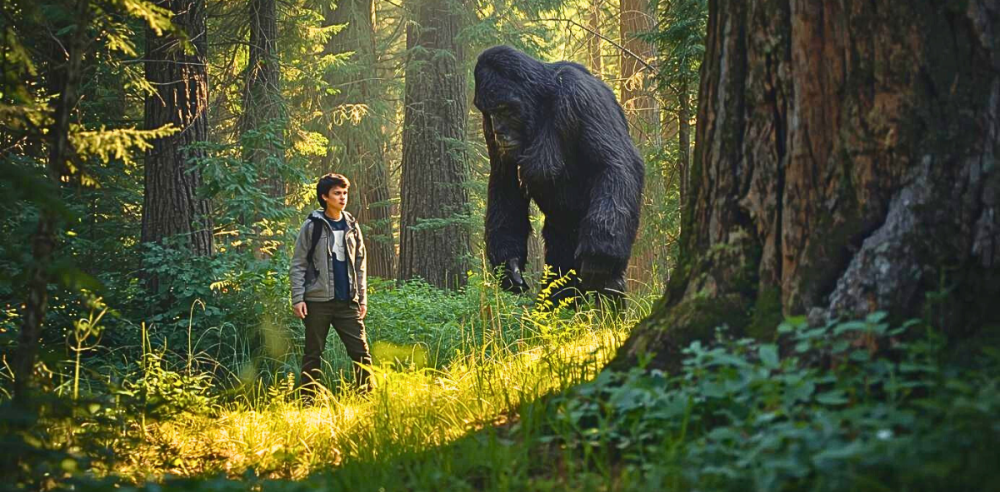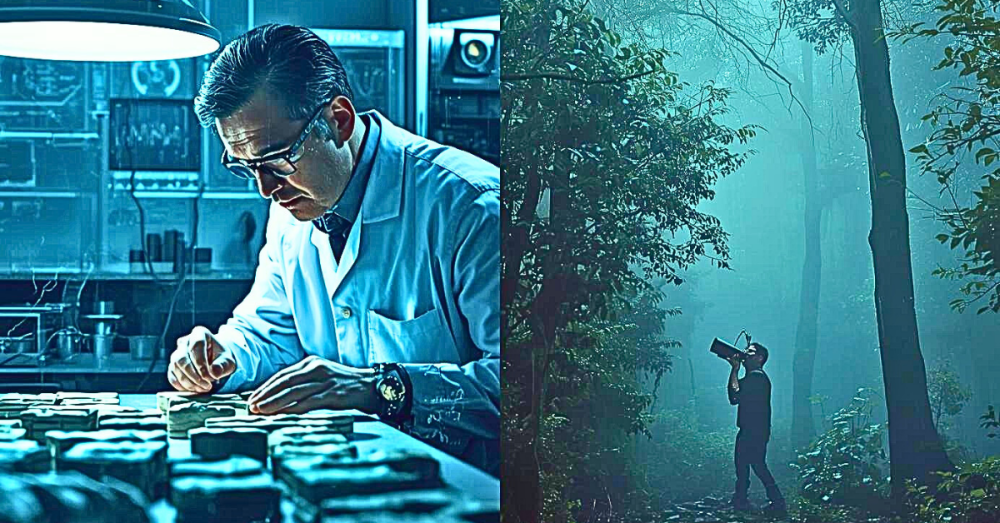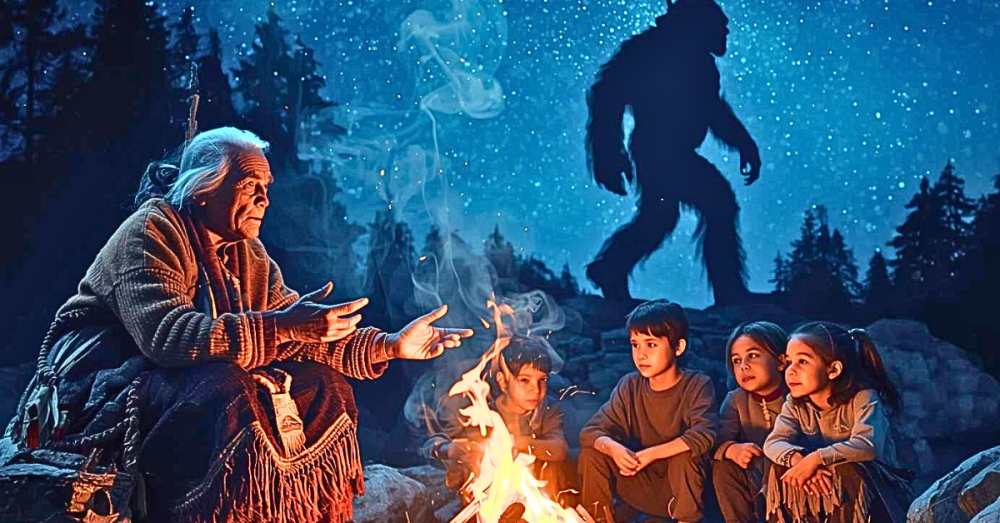
Sasquatch sightings have been part of North American folklore for generations. The elusive creature, often described as a large, hairy humanoid, has sparked the imagination of many. It all started with Indigenous tribes, where stories about giant humans inhabiting the woods have been passed down through the ages. Different regions have different names for it like Bigfoot or Yeti, but the fascination remains universal.
Cultural significance of Sasquatch varies widely. For some, it’s a symbol of nature’s mysteries and a reminder that the world still holds secrets. Indigenous communities often regard Bigfoot as a spirit or guardian of the forest, showing respect and incorporating it into spiritual narratives. These tales aren’t just stories; they carry deep cultural meaning and reflect a connection with the land.
When it comes to evidence, the debate heats up. Over the years, countless videos, photos, and plaster casts of footprints have surfaced. Some enthusiasts swear by this evidence while skeptics brush it off as hoaxes or misinterpretations. Despite advancements in technology, concrete proof remains out of reach, adding fuel to both believers and doubters.
The lore surrounding Sasquatch is as diverse as it is old. Different versions and sightings span continents, adapting to regional myths and beliefs. Whether you’re a skeptic or a believer, these stories hold a sense of wonder and keep people coming back, eager to solve the mystery. This mix of truth, myth, and imagination makes the Sasquatch phenomenon more than just a campfire tale; it invites us to question, explore, and engage with the unknown.

People Also Ask
Does Bigfoot Hunt Humans?
Most reports say no. Bigfoot seems more curious or cautious than aggressive. But there are intense stories rock throws, standoffs, and that feeling you’re being watched. What we do know? They hunt animals like deer, elk, and smaller prey. Not people.
Has a Bigfoot Ever Attacked a Human?
No confirmed cases. Some call them gentle giants. Others say they’ve been chased, screamed at, or stalked. Either way, they’re powerful. Respect is key.
Why Do People Believe Bigfoot Is Real?
Because the stories won’t stop. From Indigenous legends to unexplained sightings and that famous 1967 film — it all adds up. Not proof, but enough to keep the belief alive.
Is There Any Real Evidence?
No bones or DNA that science accepts. But we’ve got strange tracks, eerie sounds, and too many consistent stories from people who’ve never met. That says something.
Sasquatch as the Guardian of the Forest

Stories of Sasquatch stepping in to help or protect lost hikers are common in Bigfoot lore. Tales recount instances where this mysterious creature has guided people back to safety or kept them warm by seemingly deliberate acts. These accounts paint Sasquatch as a benevolent being watching over those who wander too far into the woods.
There have been numerous stories of people who claim to have shared peaceful moments with Sasquatch. Rather than fear, these encounters leave behind a sense of awe and respect for the creature. Witnesses often describe feeling watched over or protected during their experiences, adding an element of friendship to the myth.
Some believe Sasquatch acts as a caretaker, with a deep connection to the forest and its creatures. This theory suggests that Bigfoot plays a role in maintaining balance in its natural environment, serving as a protector of the wilderness and its inhabitants. It reflects an understanding of the creature that goes beyond fear and enters the realm of ecological respect.
This notion of Sasquatch as the forest’s guardian deeply influences perceptions of conservation. Awareness of such legends can inspire efforts to preserve natural landscapes, ensuring Sasquatch and other wildlife can thrive. The lore can be a powerful tool in the conservation narrative, encouraging people to cherish and protect natural habitats.
While the truth about Sasquatch remains elusive, these stories of protection resonate with many, serving as a reminder of the mysteries that nature holds and the potential for unseen allies in the wilderness. Whether or not Bigfoot exists in this way, these tales foster a sense of wonder and appreciation for the natural world.

Wildfoot Disclosure and Invitation
As an Amazon Associate I earn from qualifying purchases.
Some of the links in my blog posts are affiliate links to Amazon. This means I may earn a small commission if you decide to make a purchase, at no extra cost to you. These links are here to explore freely, with no pressure or obligation.
My blogs cover everything from Bigfoot theories and paranormal research to survival tips and personal stories. When I mention a book, tool, or piece of gear, it’s because I believe in it, use it, or have taken time to research it thoroughly.
You’ll also see connections to my other platforms, including TrailForge Gear and Paranormal Curiosities Realm all part of the same mission: to explore the unexplained and share what I find.
Thanks for reading, sharing, and supporting independent storytelling.
Shawn Thomas
Author & Creator of The Hidden Bloodlines of Bigfoot
Founder of Wildfoot Explores
The Predator Theory: When Sasquatch Turns Dangerous

Not all Sasquatch stories are peaceful afternoon tales. There are chilling reports of violent encounters that paint a more fearsome picture. People who’ve stumbled into these experiences describe Sasquatch as territorial, with aggression levels dialed up to max. The sense of fear is palpable in these stories, marking Sasquatch as anything but friendly.
Kidnapping accounts add another layer to the legend. There are tales of people vanishing without a trace, only to emerge later with stories of being taken away by a towering creature. These narratives intensify the lore around Sasquatch as a possible threat lurking in the shadows.
So, what’s behind these predator tales? Some think Sasquatch could be defending its territory, while others suggest it’s a misunderstanding of animal behavior. If a creature like Sasquatch exists, survival instincts might just be mistaken for malice.
Such stories, however, have a knack for leaving a mark. In communities where these tales circulate, fear and fascination go hand in hand, shaping collective psychology. Even if you’ve never seen a Sasquatch, just hearing these stories can make those nighttime forest sounds a little more unnerving.
While the debate continues, these predator stories offer a counterbalance to the guardian narrative. They show how myths adapt, grow, and sometimes darken, reflecting our deepest fears and uncertainties. They push us to question what we truly know about the world and its hidden corners.
The Science vs. Myth Debate

When it comes to Sasquatch, scientific scrutiny often clashes with belief. Mainstream scientists typically lean towards debunking, citing a lack of concrete evidence like bones or clear DNA samples. Yet, cryptozoologists who study unknown or mythical creatures continue to chase the possibility, arguing that the mystery is still unsolved.
Those in the cryptozoology camp argue that just because we haven’t caught one on camera or found a solid footprint doesn’t mean Sasquatch isn’t out there. They point to mysterious sounds recorded deep in the woods and unexplained tracks as hints that science hasn’t fully explored.
The back-and-forth between believers and skeptics fuels ongoing curiosity. Many researchers take a balanced view, willing to explore the legend without discrediting the possibility of its basis in fact. This approach keeps the conversation open and encourages more thoughtful exploration of both sides.
The debate is not just academic; it influences how resources are allocated for research and how seriously these hypotheses are taken. Funding usually favors projects with definitive results, leaving cryptozoologists to often rely on independent funding and grassroots support.
As we navigate the tension between science and myth, there’s a call for open-mindedness. You don’t have to choose a side to appreciate the thrill of the chase or the lore’s rich tapestry. Whether you’re hoping for proof or just along for the story, the Sasquatch debate remains a fascinating intersection of science and imagination.
The Bigfoot Debate: Where Do We Go From Here?

The quest to understand Sasquatch continues, with new technology changing the game. Drones, motion sensors, and AI-driven analysis are opening fresh avenues for exploration and potentially closing the gap on finding definitive evidence. It’s an exciting time for those intrigued by the mystery, blending old-school tracking with modern tech.
Sasquatch has cemented itself in popular culture, from movies and TV to merchandise lining store shelves. This cultural impact keeps the legend alive, ensuring new generations hear these tales, whether they’re looking for a thrill or a reason to get out into the wild and explore. Bigfoot’s status as a cultural icon adds a playful twist, inviting everyone from skeptics to true believers to engage with the lore.
As investigations continue, the field may evolve to include broader research collaborations, connecting wildlife experts with tech innovators. The mix could bring unexpected insights into both Sasquatch and the undiscovered facets of our forests. The call is out for fresh ideas, and the community seems ready to rise to the challenge.
Encouraging public interest is key. Community-led expeditions and citizen science projects are fantastic ways to involve more people in the hunt for Bigfoot. Sharing knowledge and skills not only helps uncover more clues but also fosters a spirit of curiosity and respect for our natural environments.
Wherever you stand on the existence of Sasquatch, the conversation it sparks can lead to more than just campfire stories. It prompts reflection on our relationship with nature and reminds us of the mysteries we still yearn to uncover. Whether or not we find Bigfoot, the search itself opens doors to new discoveries and adventures.
Final Thoughts: Protector or Predator?

Whether you see Sasquatch as a guardian of the wild or a primal force best left undisturbed, one thing is clear the legend is far from over.
These stories aren’t just about monsters or myths.
They’re about our connection to the land, the fear of the unknown, and the wild possibility that something ancient still walks among us.
And if you’ve made it this far, you’re not just curious…
You’re part of the search.
🔍 Ready to dig deeper?

Explore real witness accounts, ancient legends, and hidden truths in the full Bigfoot Library:
Visit the Library »

Read more thought-provoking Bigfoot blogs that question everything we think we know:
Browse the Blog »

Join the private Wildfoot Explorers group to share your thoughts and stories:
Enter the Group »
The forest still holds secrets.
Let’s explore them together.
Thank you for this very intriguing topic about the Sasquatch phenomenon, Shawn. I am very well aware, just as many other people, there is no physical or scientific evidence conclusively to the existence of Sasquatch or Yeti. I know Sasquatch is a creature that is certainly rooted in folklore, especially Native American legends. I am of the curious type and this topic interests me deeply. My question is: What is your belief or opinion about the Sasquatch/Yeti legend? Thank you again for a very interesting topic to write about.
Best wishes,
Kent
Hey Kent, appreciate your thoughtful comment and the curiosity you bring to this topic.
You’re absolutely right mainstream science hasn’t handed us a body or a lab-confirmed DNA sample that says “Sasquatch exists.” But what we do have is thousands of consistent eyewitness reports across generations, and a deep-rooted place in Indigenous oral history that predates modern America by centuries.
For me personally? I believe there’s truth in the legend more truth than most are willing to accept.
Whether you call it Sasquatch, Yeti, Yowie, or Windigo… every region seems to have a name for the “one who walks like man, but is not man.”
I’ve talked to people who’ve seen things they can’t explain. Heard things in the wilderness that don’t line up with known animals. I’ve seen fear in people’s eyes when they tell their story and that’s not something you fake.
So my belief?
Sasquatch is real. Maybe not in the way we expect but real enough to leave tracks, haunt memories, and stay just out of reach.
I’m glad you’re curious. Keep asking. That’s how we get closer to the truth.
Let me know if you ever want to dive into more theories I’ve got a few I’d love to hear your thoughts on too.
Stay wild,
Shawn Thomas
Wildfoot Explores| Author of Hidden Bloodlines of Bigfoot